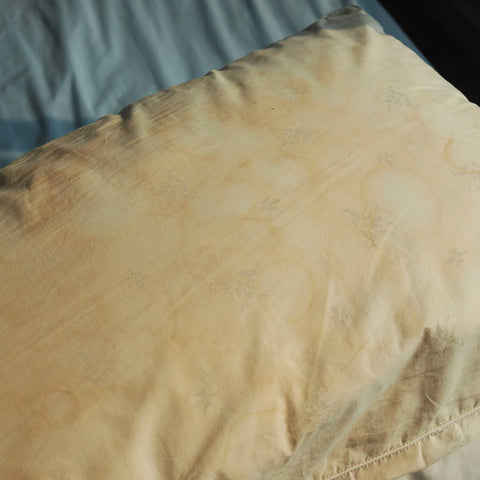A peaceful night's sleep is crucial for your overall well-being, and a good pillow plays a pivotal role in that. However, pillows, like any other product, have a shelf life and should be replaced when that time comes. Knowing when to replace your pillow is key to maintaining good sleep hygiene and ensuring your body receives the proper support throughout the night.
Understanding Pillow Lifespan
The average lifespan of a pillow varies depending on the material it's made from:
-
Memory Foam Pillows: Known for their support and contouring properties, memory foam pillows typically last between 2 to 3 years. They tend to conform to your shape, but over time, they can lose their firmness and no longer provide the support they once did.
-
Polyester Pillows: As a more cost-effective option, polyester pillows have a shorter lifespan, usually needing to be replaced every 1 to 2 years. They can start to develop lumps and lose their fluffiness relatively quickly.
-
Down and Feather Pillows: These pillows offer a luxurious feel and can last a bit longer, usually around 18 months to 3 years. While they can be fluffed back to shape, they eventually lose their loft and the ability to support your neck properly.
-
Latex Pillows: Latex is known for its durability and resilience. These pillows can last up to 3 to 4 years, if not longer, with proper care. They are resistant to dust mites and mold, which also contributes to a longer lifespan.
When to Say Goodbye to Your Pillow
Here are some telltale signs that it's time to replace your pillow:
- Lack of Support: If you're waking up with neck or shoulder pain, it's a sign that your pillow is no longer providing the support you need.
- Visible Wear and Tear: Any noticeable lumps, sagging, or flattening are clear indicators that your pillow's best days are behind it.
- Allergy Symptoms: An increase in sneezing or congestion could mean that allergens have built up in your pillow, making it time for a change.
- Hygiene Issues: Stains, odors, or discoloration are signs of accumulated sweat, oils, and possibly mildew or mold.
Caring for Your Pillows
To extend the life of your pillows, use pillow protectors and wash your pillows and their covers regularly. Fluffing regularly will also help maintain their shape. For down and feather pillows, drying them with tennis balls in the dryer can help keep them fluffy.
Choosing the Right Replacement
When it's time to shop for new pillows, think about your sleeping position and personal preferences:
- Side Sleepers: Typically benefit from a firmer pillow to fill the space between the ear and outside shoulder.
- Back Sleepers: May prefer a medium-thick pillow to provide adequate support for the head and neck.
- Stomach Sleepers: Often need a softer, flatter pillow to keep the neck aligned with the spine.
Remember to consider the material that suits your sleeping habits and comfort preferences. Whether it's the contouring support of memory foam, the softness of down, the hypoallergenic properties of latex, or the versatility of polyester, there's a pillow out there that's the perfect fit for you.
When you've chosen your new pillow, ensure you're getting the most out of it by pairing it with the best bedding accessories. Explore a wide range of pillow protectors, sheets, and other sleep essentials, all designed to enhance your sleep experience.
Conclusion
Your pillow is more than just a place to rest your head. It's a crucial component of sleep that affects your health and well-being. By keeping an eye on the lifespan of your pillow and knowing when it's time to replace it, you can ensure that every night's sleep is as restful as possible. Don't compromise on comfort—make pillow shopping a priority when the time comes, and enjoy the benefits of a fresh, supportive pillow.



